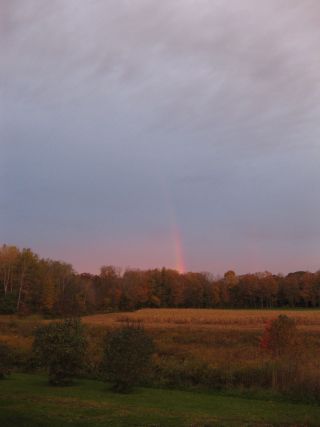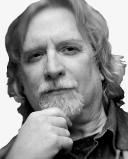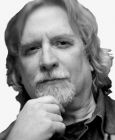Beauty
The Excellent Beauty of Scientific Mysteries
Science doesn't explain everything.
Posted July 26, 2015
There are excellent beauties in this world. Francis Bacon said “There is no excellent beauty that hath not some strangeness in the proportion.” The excellent beauties do indeed have some strangeness in their proportion. Actually more than some. They are beautiful, but a lot of their beauty resides in their strangeness.
The excellent beauties are the mysteries science uncovers. Many of these mysteries appear to be completely resistant to resolution. It is not clear what they reveal. Here, I will discuss a few of the prominent excellent beauties.
But first, it is widely believed that the greatest mysteries are those revealed by Earth’s religions. How can bread and wine turn into the body and blood of Christ? How can we be reincarnated? What is the spiritual feeling of oneness with all of life? When we get to heaven, what we will understand about the existence of evil on Earth that will justify its existence?
We’ve seen in previous Excellent Beauty blogs here that none of these religious mysteries are real, primarily because no religion is real. In a deep sense, there are no such things as religions; there are religious people, but no religions. Religions are the product of two evolutionary aspects of the human mind: (1) a group binding mechanism, and (2) magical thinking, to which we are all susceptible. We get, for example, this conclusion: in the U. S., where over one half of the citizens deny evolution, the evolution-deniers deny evolution because evolution made them evolution-deniers. Religion is thus sidelined, though, of course, it will never go away.
With that, let’s move on to the excellent beauties. I stress that these are free and available to everyone: no membership in any religion is required.
Probably the most important Excellent Beauty is consciousness. I don’t mean anything strange or unusual by the term “consciousness.” Conscious is from one perspective, the most ordinary thing in the universe. It is one’s experience of colors, of smells, sounds, tastes, feelings, touches and textures, etc. It goes away during part of our sleep each night and during serious surgeries. After decades of robust effort, science cannot explain consciousness. In fact, we don’t even know what a theory of consciousness would look like – shown the correct theory by space aliens, we couldn’t even begin to tell if it was correct or not. Neuroscience is completely useless when it comes to consciousness. Neuroscience cannot explain why aspirin works. The situation is so dire that some scientists and scholars take seriously the idea that consciousness is not a physical property of our universe. It is instead something nonphysical and probably fundamental to the universe, like gravity or energy or mass – though of course these latter three are physical. The idea that consciousness is fundamental is taken very seriously. Within this idea, it is assumed that consciousness, as some nonphysical property of the universe, showed up when everything else did – at the Big Bang. If this hypothesis is correct, then it may well be that almost everything is conscious: all animals, certainly, but also all plants, all molecules, all atoms, and, going the other way, perhaps all planets, suns, galaxies, and other cosmological phenomena. This view that everything is conscious is called panpsychism, and like I said, it is taken very seriously by some.
A second Excellent Beauty is the brute rarity of what you call the common place. You are made of matter and energy and use matter and energy every second of every day. As far as you are concerned, matter and energy are everywhere and make up the universe. Recent measurements and theory, however, show that matter and energy comprise only about 4% of the universe. Most the universe is made up of we know not what. We call this unknown stuff “dark matter” and “dark energy,” but those are just labels deployed because cosmologists had to use something for tax purposes.
Moving on, consider the numbers you use everyday: the counting numbers, fractions, negative numbers. It is provable in math that all these numbers together amount to nothing on the real number line, the infinite line we learned about in algebra, stretching to positive and negative infinity. This real line is in fact made up of numbers that are quite strange and which you almost never use, and when you do use them, you use at most 1 or 2 or them: pi and e. The numbers we use everyday are all but nonexistent – they are essentially “drowned out” by the strange numbers we never use and mostly are ignorant of.
Did you know that infinity comes in sizes? That’s right, some infinities are bigger than others. How can one infinity be bigger than another infinity if both are infinitely big? No one knows, but that this is in fact true is easily proved. For example, the infinity of strange numbers, like p and e, that we never use is provably bigger than the infinity of the counting numbers, 1, 2, 3, 4, 5, . . . . Not only are some infinities bigger than others, but some collections of numbers which are clearly not the same size are nevertheless provably exactly the same size. Example: there are an infinite number of counting numbers: 1, 2, 3, 4, 5 . . . Now consider a subset of the counting numbers -- the even numbers: 2, 4, 6 , 8, 10 . . . . The counting numbers contain not only all the even numbers, but also all the odd numbers. So the set of counting numbers is clearly bigger than the set of even numbers. Yet it is easily demonstrated that the collection of even numbers is exactly the same size as the collection of counting numbers. Infinity, then, is our third Excellent Beauty.
A fourth. How many people do we need to gather together in a room to be 100 percent sure that two of them will have the same birthday? 366. Right . . . ok, good. How many people do we need to gather together in a room to have a 50 percent chance that two of them will have the same birthday? That’s right, 23 (!). Not 183, which is one-half of 366.
Did you know that there is a very old, currently undecipherable text complete with detailed colored drawings sitting in Yale University’s Beinecke Rare Book and Manuscript Library? The author, purpose, and meaning of the text are unknown. Attempts to decode it or translate it defy all modern techniques used by linguists and cryptologists. It’s called the Voynich Manuscript. Most scholars believe it was written sometime in the fifteenth or sixteenth century, but no one is sure, though recent carbon-14 dating does put the date of the paper in the early fifteenth century. The language the manuscript is written in, if indeed it is a language, is completely baffling. Detailed statistical analysis of the symbols making up the manuscript, however, leads most scholars to believe that it is in fact written in some language, just not one used on planet Earth by any known culture or people.
And for our final Excellent Beauty: there are true contradictions in our world. These are statements that have to be false, but are also true. Example: This sentence is false. There are also events that cannot occur, but do. It is reasonable to call these true contradictions paradoxes. So another way to put this point is to say there are real paradoxes in our world. It is shocking how common some of these are. The most common of these paradoxes is motion itself, which, and I know this sounds unbelievable, we still don’t understand well. Put it succinctly: Zeno’s paradoxes have not been solved.
Note that I have not discussed any Excellent Beauties from quantum mechanics. Quantum mechanics is famous for weird and strange things, so I thought I would skip them here.
We have barely scratched the surface. The existence of these Excellent Beauties is the true boundary science. There is a nonmundane world behind our mundane one. There is a world of shocking, real, and beautiful mysteries lying just over the horizon of our ordinary lives.





